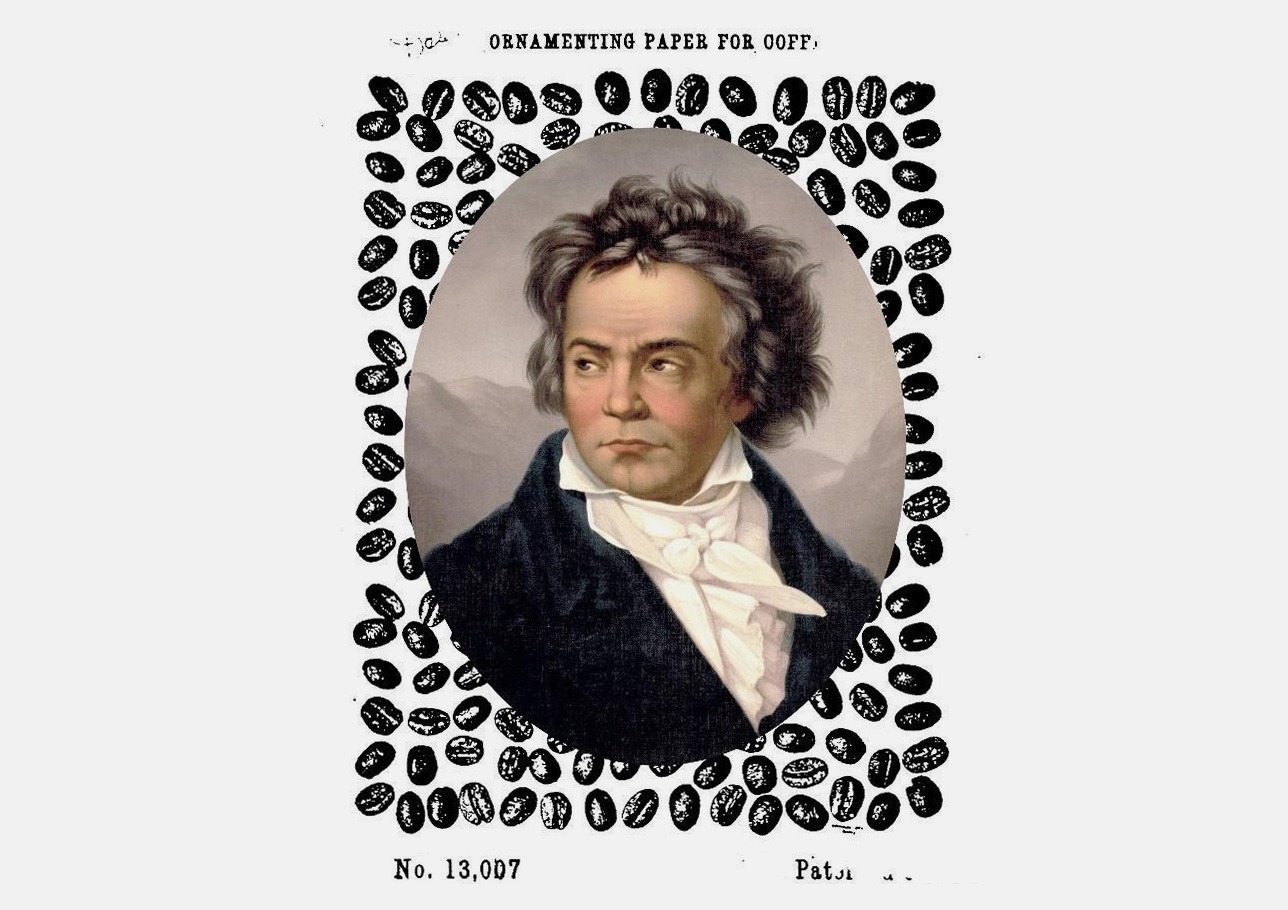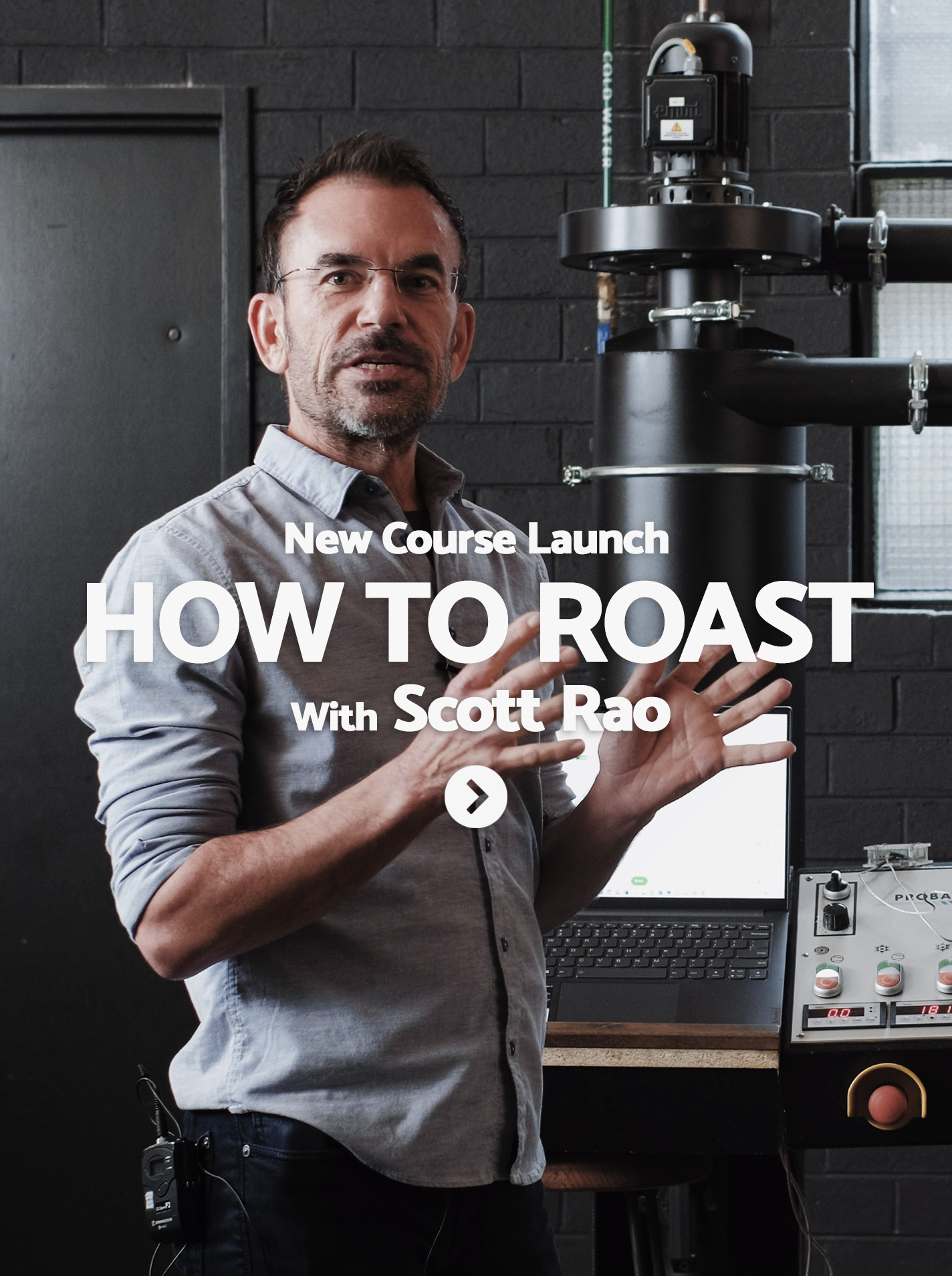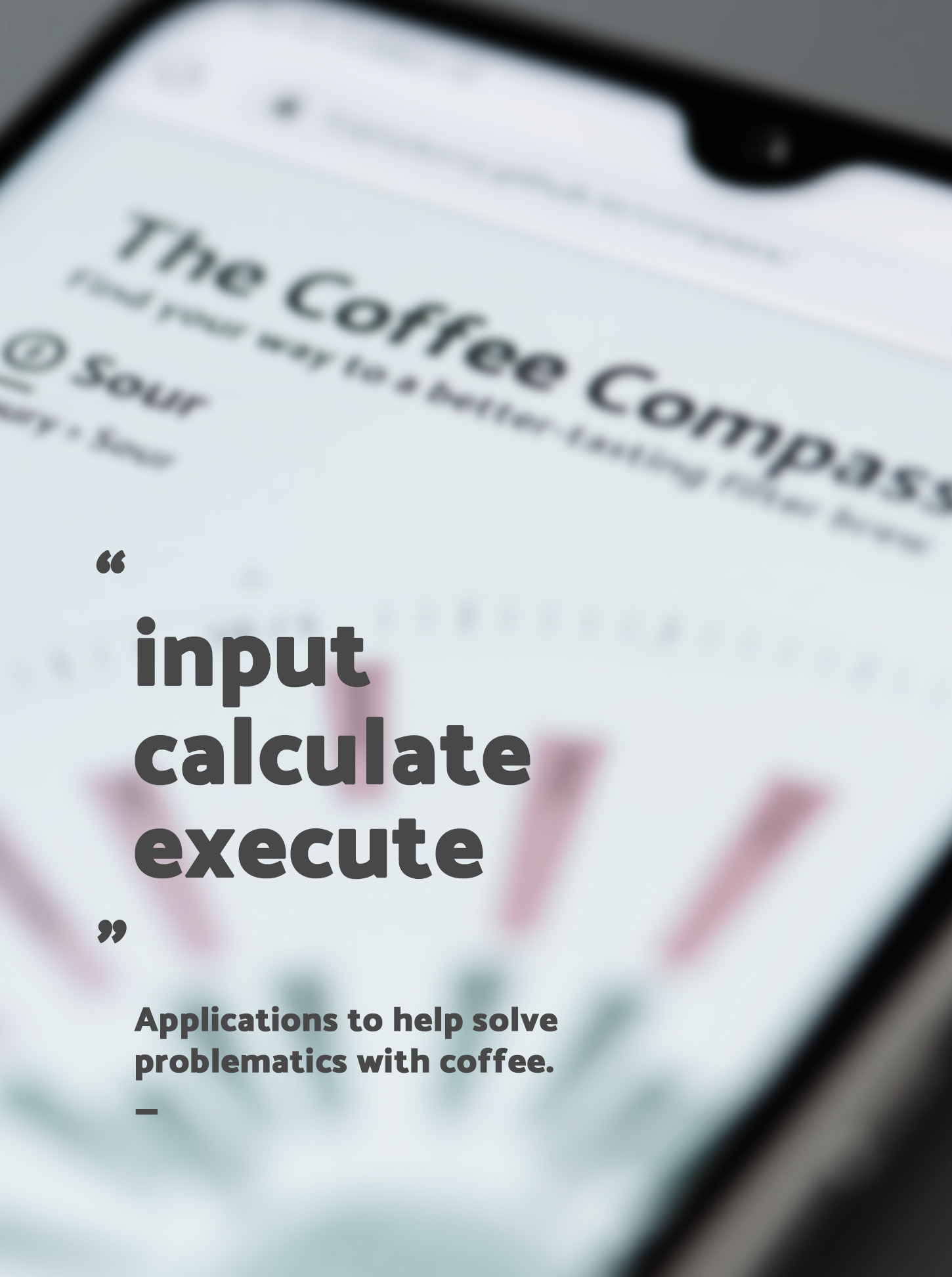By Sebastien Delprat, with the collaboration of Mikael Janvier and Lucio Del Piccolo
Multi-part article – go to part: #1 #2
Nearly two centuries after his death, Beethoven is known for his genius, stormy temper, rebel haircut, deafness and his apartment with papers all over the place. But that’s not what I am interested in here… unless all that is due to the consumption of coffee.
The internet is full of fascinating stories, sometimes too good to be true. Most of the time very approximate, if not totally wrong, as it tends to infinitely multiply and amplify false rumours and fake stories. Unfortunately, the rise of AI will not solve that problem, since it condensates and averages billions of pages… from the internet.
To reach the truth, one has to crawl by hand over this ocean, going upstream, find the right mouth, follow the river and dig for the sources. In the hope to find something as pure and direct as the “Moonlight” or the “Tempest” piano sonatas.
The trip does not end there. Even then, it is a question of interpretation: not everybody is Glenn Gould or Herbert Von Karajan. What did the author truly mean? We should always remember that, as humanist and attached to the ideals of the French Revolution as Ludwig van Beethoven was, it didn’t prevent his music from being largely taken over by the Nazi regime.[1]
Pom pom pom pom …
 Personal composition of a portrait of L. v. Beethoven.[2] [Credits: Beethoven’s Museum of Bonn & US Patent Office]
Personal composition of a portrait of L. v. Beethoven.[2] [Credits: Beethoven’s Museum of Bonn & US Patent Office]
So, why add another internet page about Beethoven’s habits? Because it touches my very little playground: coffee. And coffee at a very interesting moment in history.
It is quite rare to get testimony about coffee use in the 18th and early 19th century, but there are dozens of anecdotes around Beethoven and coffee. With lots of contradictions though: one can read that Ludwig had a very fine taste for coffee, that he only drank coffee that he prepared himself, made in a special coffee maker or even using a machine that he invented.[3] Some others argue that there is no evidence for these stories, that he had almost no interest in food, that it’s impossible to know how he took his coffee: black, with sugar or milk. One persistent anecdote tells that he used precisely 60 beans for his coffee, but only very few cite the origin of the story.
Let’s see what all the fuss is about.
The Kaffeehauses
Beethoven lived in Vienna for the last 35 years of his life (he arrived there three years after the beginning of the French Revolution, in 1792, up to his death in 1827). The ancient Vindobona, along the Danube, was one of the main capitals of Europe and already possessed a very strong coffee culture. It was not the first place to open coffeehouses in Europe (Venice, Oxford and Paris opened their first ones respectively in 1645, 1652 and 1672) but, boosted by its strong Greek, Turk and Armenian communities,[4] and being at the crossroads of Europe and the Ottoman Empire (who sieged the city two times in 1529 and 1683) it developed with a hundred places to buy and drink coffee. It is still considered today as the capital of coffeehouses.[5]
In 1792, the “Golden Goose” or the “Blauen Flasche”[6] were not active anymore but dozens of other “Kaffeehaus”[7] were animating the cosmopolitan city when the young Ludwig, who fled Bonn because of war threats from France, came to Vienna for lessons with the Master Joseph Haydn. Two years earlier (or in 1787, at the age of 16, according to the accepted chronology[8]), he went there for the first time to meet Mozart in the company of Schikaneder, and that’s the first testimonyprecisely then the first mention of Beethoven drinking coffee. Can you imagine that? The first (and maybe only) time Beethoven met Mozart, they drank coffee together at his house.[9]
Wolfgang Amadeus was known to be a frequent customer of coffeehouses in Vienna, where he loved to talk and play pool with strangers. Beethoven was much more reserved, but also used to go to coffeehouses (once or twice a week at the end of his life) mainly to read newspapers and smoke the pipe. He was apparently avoiding conversation with strangers and went in and out from the back door when he could.[10] The places that he supposedly frequented were the Kramers Kaffeehaus (Schlossergasse 1), the “Zum Taroni” Kaffeehaus (Graben 15) or the Milani Kaffeehaus (Kohlmarkt 6).[11] The only place that is mentioned in historical documents[12] is the “Zur Goldene Birne” on Landstraßer Hauptstraße 31.[13]
Testimonials about Beethoven’s personal life when he was alive are extremely rare. There’s only one known, published in 1824 by Johann Chrysostomus Sporschil in the Morgenblatt für gebildete Stände (November 5th, 1823) and reprinted later in the Wiener Theater-Zeitung (Bäuerles Theaterzeitung).[14] This first insight in his life already describes Beethoven as a regular visitor of coffeehouses.
“When he lives in Vienna in winter, he likes to look through the newspapers in the coffeehouse with a cup* of coffee, smoke a pipe and chat with friends before going for a walk. As he is in the habit of working late into the night and yet gets up very early again, he often sleeps for an hour after his walk.” [15]
* The word “Schälchen” designates either a bowl or a cup, but what was it really?

 Portrait of Beethoven in a Coffeehouse, by Eduard Klosson, 1823.[16] [Credit: Beethoven’s Museum of Bonn]
Portrait of Beethoven in a Coffeehouse, by Eduard Klosson, 1823.[16] [Credit: Beethoven’s Museum of Bonn]
Among the numerous representations of Beethoven, there’s one from Eduard Klosson showing him in a coffeehouse : apart from his severe look, his pipe in one hand and the journal in the other, one can see the small cup on the table in front of him (with what looks like a small flask that was maybe used to serve coffee, or a glass of fresh water that was also frequently on the tables).
The cup of coffee looks pretty small but checking representations of “Kaffeehaus” scenes from that period shows that the cups used for coffee were indeed very small, as nowadays espresso cups. In these public places, the atmosphere was very Oriental, with people of different origins (Greeks, Turks, Austrian) smoking, playing pool or chess, and drinking coffee. The coffee was certainly prepared as the Ottomans were making it, which means boiled into a Dallah or a Cezve, producing a decoction of strong black coffee.

 Details from different paintings and lithography of Viennese coffeehouses in the early 19th century. [Credits: Wien Museum]
Details from different paintings and lithography of Viennese coffeehouses in the early 19th century. [Credits: Wien Museum]
Notebooks & Biographies: The Sixty Beans
Earlier anecdotes about Beethoven come from his personal notes and notebooks that he used from 1818 to communicate with relatives (as he was almost completely deaf by 1815) and, sometimes, write personal thoughts. What can be found in these notes is very little but something very peculiar: Beethoven also consumed coffee at home. At least from 1792, when he worked with Haydn, he bought coffee and chocolate on a regular basis “für Haydn und mich” (for Haydn and me).[17]
Coffee beans were quite expensive at the time, and preparing coffee at home was not the norm but rather reserved to the upper class…[18] which was not exactly the case of Beethoven, who lived modestly along his whole life. Moreover, at the end of the 18th century, coffee was mostly reserved to special occasions… but not for Beethoven.
More extensive testimony comes from Anton Felix Schindler who assisted him in his last years (from September 1822 to May 1824, then from December 1826 to Beethoven’s death in March 1827). He was his unpaid personal secretary and became his main biographer, being almost the only source about Beethoven’s personal life. He published three editions of a Beethoven biography (in 1840, 1845 and 1860).
Since the first edition, Anton Schindler presents Beethoven as a very regular coffee drinker:
“For his breakfast he usually took coffee, which he frequently prepared himself; for in this beverage he had an oriental fastidiousness of taste. He allowed sixty beans for each cup, and lest his measure should mislead him to the amount of a bean or two, he made it a rule to count over the sixty for each cup, especially when he had visitors. He performed this task with as much care as others.” [19]

 Extract from the first edition of Anton Schindler’s biography (original and English versions from 1840 and 1841)
Extract from the first edition of Anton Schindler’s biography (original and English versions from 1840 and 1841)
Here is the core of almost all the stories around Beethoven’s way to prepare coffee: this passage also tells us that he was precisely counting 60 beans for a cup, and that he prepared his beverage “as scrupulously as the Orientals” (“Mit diesem Getränke war er so scrupulös wie die Orientalen”). If that implies that the Orientals were counting the beans, or that Beethoven prepared the coffee the way Orientals prepared it (as a decoction) is not clear.
Nevertheless, coffee was not his favorite drink according to Schindler:
“Beethoven’s favourite beverage was fresh spring water, of which he often drank copiously from morning to night. He preferred the wine of the heights around Buda to every other; but, as he was no judge of wine, he could not distinguish the adulterated from the pure; and, by drinking the former, he frequently caused great derangement to his weak stomach; but no warning of this kind had any effect upon him. Among his enjoyments may also be numbered a glass of good beer and a pipe of tobacco in the evening. To these may be added the perusal of the political journals, especially the Augsburg Allgemeine Zeitung. This sort of reading engrossed a great deal of his time.”
What can be said is that, in the eyes of his biographer, Beethoven was not a fine gourmet. He’s even suggesting that he had no taste at all: if he was unable to distinguish finest to adulterated wine, how could he be an expert in the domain of coffee? These bad habits eventually killed him as he either died from cirrhosis or lead poisoning (both coming from the bad wines he was drinking).
We could deduce that Beethoven was drinking coffee only to get a mind boost, that he was using it almost as a medicine, with an exact “dosage” each day. But we’ll see that doctors, on the contrary, recommended him to stop drinking coffee at the end of his life. More than the sign of an obsessive disorder, he was maybe counting precisely the number of beans to get the right taste each time (as nowadays home baristas) and not waste any of his expensive goods. If the phrasing is exactly the same in the second edition, it was slightly rearranged in 1860, with a section dedicated to “Food and drink”.[20]

 Extract from the third edition of Anton Schindler’s biography (original and English versions from 1860 and 1966)
Extract from the third edition of Anton Schindler’s biography (original and English versions from 1860 and 1966)
Did someone ask Schindler how Beethoven was preparing his coffee at home? Interestingly the biographer adds a precision on the coffee preparation routine: Beethoven usually prepared it in a “glass coffee maker”. This unique word, “Glasmaschine”, is enough to shake up the entire world (of coffee): what was that machine? Did he boil the water in it? Was it a Siphon, a French press, a Chemex maybe? Why add that information 20 years later? Can we trust Anton Schindler?
After all, Barry Cooper, the great specialist of Beethoven historiography once wrote “Anything reported by Schindler must be assumed to be doubtful or false, unless supported by independent evidence (in which case, Schindler’s contribution is redundant).”[21]

 Portrait of Anton Schindler [Credit: Beethoven’s Museum of Bonn]
Portrait of Anton Schindler [Credit: Beethoven’s Museum of Bonn]
Indeed, Schindler looked a bit unfriendly and mean at first glance, but his recent excommunication by the musicologist world is very unfair, and relies mainly on musicologists arguments, not necessarily on private life anecdotes.[22] Above all, there are no discussions on the fact that Schindler knew him very well and shared lots of aspects of his day to day life.
If we go in that direction, Schindler himself was reluctant to other’s stories and was very critical about anecdotes circulating in Vienna before his biography came out. In 1834, he wrote: “In general, I think I must warn all of B. friends and admirers to believe very little, or better yet, nothing at all, of all the anecdotes and writings about him, because almost everything is pure fiction and fabrication.” [23]
It is true that Schindler had a huge ego, but he is still the one and only reference on Beethoven’s habits and daily life. All subsequent biographers re-wrote almost word for word the stories that he published.[24] With the exception of Ludwig Nohl, a renowned musicologist who wrote different books on Beethoven, one particularly interesting based on testimonies from Beethoven’s contemporaries.[25]
So let’s dig deeper into it: in Nohl’s book, apart from the Sporschil story (p.240-244, already cited), and another one on his coffeehouse habits (from Grillparzer, p.224), there are different stories confirming the regular consumption of coffee by the Master, and even the use of a glass machine:
From K. Gottlieb Freudenberg in 1824 (gathered by Dr. Viol):
“I was not aware that Beethoven was so deaf as this. How should I introduce myself? I wrote, ‘Freudenberg, music teacher, from Breslau, desires to make the acquaintance of the great and gifted Beethoven.’ Presently a thick-set figure of middle height appeared, and with friendly gestures and kind looks drew me into his room, where I was given a seat on the sofa, and had an hour’s pleasant talk over a cup of black coffee.” (p.256)
From Dr. Karl von Bursy who met Beethoven in June 1816 (extract is from his personal journal):
“I found Beethoven at his writing table, with a sheet of music before him, and a glass machine in which he was making his coffee. Neither of his two pianos were yet open.” (p.160)
From Friedrich Starke who was invited for breakfast in 1812 (gathered by Dr. F.R. Gassner in 1840):
“But most memorable and agreeable was an invitation to a breakfast, which was to Starke a veritable breakfast for his soul. Beethoven was lodging at that time, 1812, at the Mölker Bastion. After partaking of the excellent coffee, which Beethoven used to make himself in a glass machine, Starke begged for some spiritual refreshment; where-upon Beethoven improvised in three different styles” (p.192)
The proper words in the German version of the last two extracts are respectively “gläsernen Kolben” and “gläsernen Maschine”, which can be translated as “Flask made of glass” and “Machine made of glass”.
On another note, and to complete the portrait, there is another interesting extract from Luise Mühlbach written in 1859[26] who reads (for the burlesque of the scene):
“Oh ! Exclaimed Beethoven. The coffee’s not even ready yet? I’m terribly hungry, I get up two hours later than usual, and the coffee isn’t even ready yet.
Sir, the water has been boiling for an hour, cried Mrs. Streng, but you forbade me to take my own coffee!
Why did I forbid it? Asked Beethoven wisely. Because I never get a proper cup of coffee when she takes it herself, sometimes taking too much, sometimes too little, sometimes wasting it because she knows it costs her nothing, sometimes puffing away as if she had to pay for it. Oh God, I am a very unhappy person, I have to do everything alone, think of everything myself. Come, Mrs. Schnaps, I will give her the coffee!
He went to the closet in his bedroom, unlocked it, and took out the tin coffee can. With perfect seriousness, he counted out sixty coffee beans and handed them to the housekeeper.
Now, Mrs. Schnaps, make me a good, nice cup of coffee, but listen, not more than one cup of sixty beans. But wait, since you’re giving me croissants, one cup is not enough. I must have two cups today. So I count them again!
And he opened the cupboard again and counted out another sixty beans with the utmost precision.” (p.101)
What a scene !
To be continued…
[1] To which the Austrian Karajan had committed himself as early as 1933.
[2] From Ferdinand Schimon (1819) and a Design Patent from O.A. Gill : US D013007 (June 1882).
[3] “How to Make Coffee the Way Beethoven Liked It” by Blake Stilwell (February 12th, 2021).
[4] See “Johannes Diodato opens Vienna’s first Coffeehouse” by Harald Sack (2018) and “A Merchant, a Spy, an Artist, and a Viennese Coffeehouse Owner: Some Notes on an Armenian Sketchbook-Chronicle Preserved in the National Library of Austria” by Sebouh AslanianSebouh Aslanian (2023). Diaspora 23(2), p.284-309.
[5] See “Comment le café devint viennois” by David Do Paço (2012). Hypothèses, 1 (1), p.343-353.
[6] The first coffee shops opened by Ovannes Astuatsaturian, better known as Johannes Diodato, then Jerzy Franciszek Kulczycki, in 1685 and 1686. See Teply’s work, cited by Sebouh AslanianSebouh Aslanian (2023), Opus cit.
[7] Nearly 90 in 1804 according to the Wien Geschichte Wiki.
[8] Ludwig van Beethoven on Wikipedia
[9] That story appears in Neue Zeitschrift für Musik, no 37, (August 7th 1834).
[10] That’s what Wilhelm von Lenz writes in “Beethoven Eine Kunststudie“ (1855) p.151, but also Anton Schindler in its first biography “Biographie von Ludwig van Beethoven” (1840), p.265.
[11] “Beethoven-Gaststätten” in Wien Geschichte Wiki
[12] “Letters from the Collection of Ludwig Nohl”, translated by Lady Wallace (1868), p.124.
[13] He used to live just in front from 1817 to 1819 (see Wien Geschichte Wiki).
[14] “Beethoven” in Morgenblatt für gebildete Stände (November 5th, 1823), and “Musikalischer Wegweiser“ in Wiener Theater-Zeitung [Bäuerles Theaterzeitung], (November 15th, 1823), also reprinted in other journals. This article is also a crucial testimony for Anton Schindler’s case, see “Anton Schindler as destroyer and forger of Beethoven’s conversation books: A case for decriminalization” by Theodore Albrecht, in Music’s intellectual history, p.170 (2009).
[15] Original version reads: “Er liebt es, wenn er im Winter zu Wien wohnt, nach Tische, bevor er seinen Spaziergang antritt, im Kaffeehause bey einem Schälchen Kaffee die Zeitungen zu durchschauen, ein Pfeifchen zu schmauchen, wohl auch mit Freunden zu konversieren. Da er bis tief in die Nacht zu arbeiten und doch wieder sehr früh aufzustehen pflegt, geschieht es häufig, daß er nach vollbrachtem Spaziergange eine Stunde schläft.“ All the translations not available in books were made possible thanks to DeepL and/or Google Translate.
[16] NE 81, Band VI, Nr. 1005, Beethoven’s Museum of Bonn.
[17] Thayer, who meticulously studied Beethoven’s notebooks sold by Schindler to the Prussian Königliche Bibliothek in Berlin, found few occurrences of the word “Kaffee”. See “Ludwig van Beethoven’s Leben – Vol.1” by Alexander Wheelock Thayer (1866), in particular p.259. See also “Die” Grenzboten – Zeitschrift für Politik, Literatur und Kunst (1879), p.361.
[18] Coffee cost 40 to 45 Kreuzers the pan, which represents 6.6 times the weight cost of beef meat. See David Do Paço (2012), Opus cit. Moreover, during Napoleon’s continental blocus (between 1808 and1813), real coffee was almost impossible to find.
[19] “Biographie von Ludwig van Beethoven“ by Anton Schindler (1840), p.264. The English translation “The life of Beethoven” was released the following year, in 1841 (corresponding pages are p.183-184).
[20] “Biographie von Ludwig van Beethoven” by Anton Schindler (1860), p.193 for the original German version. It was translated to English as “Beethoven as I knew him“ (1966), corresponding page is p.386.
[21] “Beethoven. Master musicians series” by Barry Cooper (2000), cited by Theodore Albrecht (2009), Opus cit.
[22] Thayer and Cooper launched a cabal against Schindler, accusing him of destroying most of Beethoven’s notebooks (which is false, he rather saved them from disappearance) and forged entries in these books (which is true, but not in any way that changes history). See the great video from Wim Winters (AuthenticSound) on that subject “Decriminalization of Beethoven’s first Biographer Anton Schindler” and the essential article from Theodore Albrecht (2009), Opus cit.
[23] Sammlung Wegeler, W 84, Beethoven’s Museum of Bonn.
[24] At least for the coffee anecdotes, “Großes Instrumental und Vokal-Concert” by Ernst Ortlepp (1841), “Beethoven Eine Kunststudie“ by Wilhelm von Lenz (1855) or “Neue Beethoveniana” by Theodor Frimmel (1890) are just repeats of Schindler’s writings.
[25] “Beethoven : nach den Schilderungen seiner Zeitgenossen“ by Ludwig Kohl (1877) for the original German book. It was translated in English as “Beethoven depicted by his contemporaries” in 1880.
[26] “Napoleon und der Wiener Congress – Vol. 2” by Luise Mühlbach, aka Clara Mundt (1859).



0 Comments